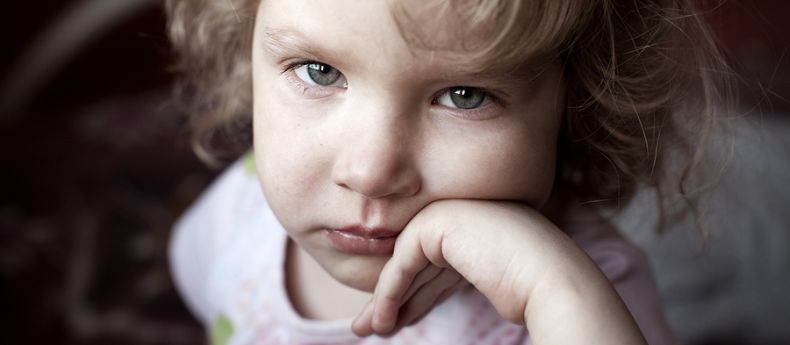
儿童铅中毒
铅是一种天然存在的,以有机或无机两种形式存在的蓝灰色金属。它很软,柔韧,且耐腐蚀。几千年来铅被人类以各种方式利用着,并在今天仍被广泛使用。人类几千年前就认识到铅的毒性及后果,它可能也导致了罗马帝国的衰落。
儿童铅中毒是一个持久的世界性问题。据世界卫生组织(WHO)估计,约0.6%的全球疾病负担与之有关。
0至18岁的中国人口的平均BLL(血铅水平)在过去10年里逐步下降。这种下降可能是由于多种因素引起的,如收入水平,性别,和年龄差异。虽然中国在控制预防铅污染方面已经作出了显著的成绩,尽一步降低儿童铅中毒仍需大家齐心协力 。
我的孩子是如何接触到铅的?
年幼的孩子会花很多时间在地板上玩。他们喜欢把自己的手,玩具,以及其他东西往嘴里放。这会增加他们吞咽铅尘和油漆的机会。只需极微量的铅就会对成长中的年龄小的儿童造成伤害。
胎盘传播和母乳含铅问题
铅可以通过胎盘传播,婴儿血液中的铅浓度和母亲的铅浓度是相似的。
铅也会出现在母乳中。但其浓度更接近血浆铅浓度,而比血铅浓度低得多,所以很少的铅会从母体中被传送到母乳里。血铅浓度超高的妇女如母乳喂养会让她们的婴儿有接触铅的危险。
临床表现
当儿童的血铅浓度大于60µg/dL 时, 他们可能会抱怨头痛,腹痛,食欲不振,及便秘等。他们可能显得笨拙,情绪不稳,活力降低,和嗜睡。这些都是中枢神经系统受累的前驱症状,并可能会迅速发展至呕吐,昏迷,抽搐等。
虽然职业铅中毒的成人中有绞痛,周围神经病变,和慢性肾脏疾病,但这些症状在儿童中是罕见的。
治疗管理
儿童铅中毒的治疗管理方式主要由血铅浓度的高低来决定。目前我们不认为血铅浓度<10µg/dL的儿童有任何铅中毒的风险。当浓度大于或等于10µg/dL 时,应当复查孩子的血铅浓度。如果社区内许多儿童的血铅浓度都大于10µg/dL时,需要调查环境中铅的可控来源。当儿童的血铅浓度>20 µg/dL或持续3个月或以上>15µg/dL时, 应当对其进行环境和医学评估。如果血铅浓度大于45µg/dL,患者应立即看医生,并可能需要住院进行注射治疗。
参考资料:
- American Academy of Pediatrics: Sources of Lead Exposure and Prevention Strategies
Source Prevention Strategy
Environmental
Paint Identify and abate
Dust Wet mop (assuming abatement)
Soil Restrict play in area, plant ground cover,
wash hands frequently
Drinking water Flush cold-water pipes by running the water until
–it becomes as cold as it will get (a few seconds
-to 2 minutes or more; use cold water for
–cooking and drinking
Folk remedies Avoid use
Cosmetics containing additives such as Avoid use
–kohl or surma
Old ceramic or pewter cookware, old Avoid use
–urns/kettles
Some imported cosmetics, toys, crayons Avoid use
Contaminated mineral supplements Avoid use
Parental occupations Remove work clothing at work; wash work
clothes separately
Hobbies Proper use, storage, and ventilation
Home renovation Proper containment, ventilation
Buying or renting a new home Inquire about lead hazards
Lead dust in carpet Cover or discard
Host
Hand-to-mouth activity (or pica) Frequent hand washing; minimize food on floor
Inadequate nutrition Adequate intake of calcium, iron, vitamin C
Developmental disabilities Enrichment programs
- Saturnine gout among Roman aristocrats. Did lead poisoning contribute to the fall of the Empire? (Nriagu JO.N Engl J Med 1983; 308:660.)
- Lead Poisoning in Children (Heda Dapul, et al; Advance in Pediatrics 61, 2014; 313-333)
- The national trend of blood lead levels among Chinese children aged 0-18 years old, 1990-2012. (Li MM, et al.; Environ Int. 2014 Oct;71:109-17)
- Determinants of elevated blood lead during pregnancy in a population surrounding a lead smelter in Kosovo, Yugoslavia. (Graziano JH, Popovac D, Factor-Litvak P, et al. Environ Health Perspect. 1990;89:95–100)
- Relationships of lead in breast milk to lead in blood, urine, and diet of the infant and mother. (Gulson BL, Jameson CW, Mahaffey KR et al. Environ Health Perspect. 1998;106:667–674)
- Lead poisoning in childhood—comprehensive management and prevention. (Chisolm JJ Jr, Kaplan E. J Pediatr. 1968;73:942–950)
- Lead exposure and cardiovascular disease—A systematic review. (Navas-Acien et al.; Environ. Health Perspect. 2007; 115: 472–482.)
- Advisory Committee on Childhood Lead Poisoning Prevention. Recommendations for blood lead screening of young children enrolled in Medicaid: targeting a group at high risk. (MMWR Recomm Rep. 2000; 49(RR-14):1–13)
- Centers for Disease Control and Prevention. Managing Elevated Blood Lead Levels Among Young Children: Recommendations From the Advisory Committee on Childhood Lead Poisoning Prevention. Atlanta, GA: Centers for Disease Control and Prevention; 2002. Available at: www.cdc.gov/nceh/lead/CaseManagement/caseManage_main.htm. Accessed September 16, 2004
- American Academy of Pediatrics, Committee on Environmental Health. (Pediatric Environmental Health. 2nd ed. Elk Grove Village, IL: American Academy of Pediatrics; 2003)
Copyright United Family Healthcare 2018 All right reserved ICP 京ICP备13017554号-4



